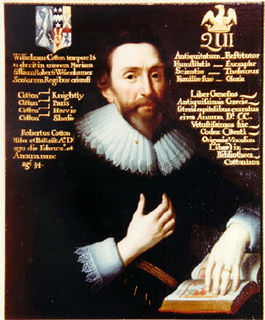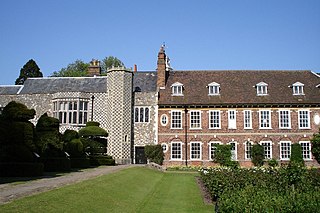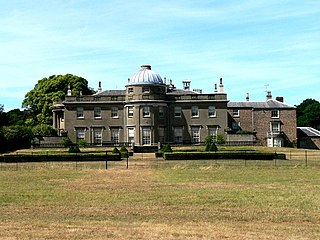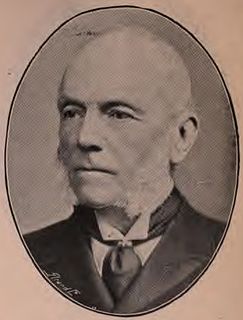There have been two baronetcies created in the Baronetage of England for members of the Culpeper family (also known as Colpeper, Colepeper or Colepepper) of Kent and Sussex. Both are extinct.

Kent is a county in South East England and one of the home counties. It borders Greater London to the north-west, Surrey to the west and East Sussex to the south-west. The county also shares borders with Essex along the estuary of the River Thames, and with the French department of Pas-de-Calais through the Channel Tunnel. The county town is Maidstone.
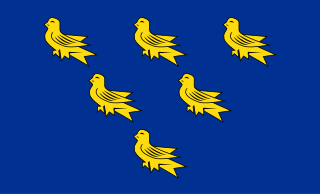
Sussex, from the Old English Sūþsēaxe, is a historic county in South East England corresponding roughly in area to the ancient Kingdom of Sussex. It is bounded to the west by Hampshire, north by Surrey, northeast by Kent, south by the English Channel, and divided for many purposes into the ceremonial counties of West Sussex and East Sussex. Brighton and Hove, though part of East Sussex, was made a unitary authority in 1997, and as such, is administered independently of the rest of East Sussex. Brighton and Hove was granted City status in 2000. Until then, Chichester was Sussex's only city.
Contents
The baronets descended from the Culpepers of Bayhall, Pembury, Kent and from Sir Thomas Culpeper Castellan of Leeds Castle who died in 1321.

Pembury is a large village in Kent, in the south east of England, with a population of 6,128 at the 2011 Census. It lies just to the north-east of Royal Tunbridge Wells.
A castellan is the title used in Medieval Europe for an appointed official, a governor of a castle and its surrounding territory referred to as the castellany. The title of governor is retained in the English Prison system, as a remnant of the medieval idea of the castellan as head of the local prison. The word stems from the Latin Castellanus, derived from castellum "castle". Sometimes also known as a constable of the castle district, the Constable of the Tower of London is, in fact, a form of castellan, with representative powers in the local or national assembly. A castellan was almost always male, but could occasionally be female, as when, in 1194, Beatrice inherited her father's castellany of Bourbourg upon the death of her brother, Roger. Similarly of Agnes at Harlech Castle upon the death of her husband John de Bonvillars in 1287.

Leeds Castle is a castle in Kent, England, 5 miles (8 km) southeast of Maidstone. It is built on islands in a lake formed by the River Len to the east of the village of Leeds.
The Baronetcy of Culpeper of Preston Hall, Kent was created on 17 May 1627 for William Culpeper of Preston Hall, Aylesford, Kent. [1] He served as High Sheriff of Kent in 1637. His grandson, the third Baronet, served as High Sheriff in 1704 and was Member of Parliament for Maidstone 1705–1713 and 1715–1723. The baronetcy was extinct on his death. The Kent estates passed to his sister and via her second marriage to the Milner family.

Preston Hall is a former manorial home and associated estate in Aylesford in the English county of Kent. It dates to the Norman period and was owned by the Culpepper family for over 400 years. Part of the estate became the Royal British Legion Village in the 1920s and the hall itself was used as a hospital after World War II. The estate was broken up over a period of time and most of the area it once covered is now used for housing. The hall itself was transformed into 36 flats in 2015. The Heart of Kent Hospice also occupies a site on the property.

Aylesford is a village and civil parish on the River Medway in Kent, 4 miles NW of Maidstone in England.
The High Sheriff is the oldest secular office under the Crown. Formerly the High Sheriff was the principal law enforcement officer in the county but over the centuries most of the responsibilities associated with the post have been transferred elsewhere or are now defunct, so that its functions are now largely ceremonial. The High Sheriff changes every March.
The Baronetcy of Culpeper of Wakehurst, Sussex was created on 20 September 1628 for William Culpeper, of Wakehurst, a descendant of the senior line of the Bayhill family. [2] He was High Sheriff of Surrey and Sussex in 1634 and represented East Grinstead in the Parliament of 1640. He was succeeded in turn by two sons and his great grandson. The baronetcy was extinct on the latter's death.

Wakehurst, previously known as Wakehurst Place, is a house and botanic gardens in West Sussex, England, owned by the National Trust but used and managed by the Royal Botanic Gardens, Kew. It is near Ardingly, West Sussex in the High Weald, and comprises a late 16th-century mansion and a mainly 20th-century garden, and Kew’s Millennium Seed Bank, in a modern building. Visitors are able to see the gardens, the Mansion, and also visit the seed bank. The garden today covers some 2 square kilometres and includes walled and water gardens, woodland and wetland conservation areas.
The list of known High Sheriffs of Surrey extends back to 1066. At various times the High Sheriff of Surrey was also High Sheriff of Sussex.
The office of High Sheriff of Sussex is over 1000 years old, with its establishment before the Norman Conquest. The Office of High Sheriff remained first in precedence in the counties until the reign of Edward VII when an Order in Council in 1908 gave the Lord-Lieutenant the prime office under the Crown as the Sovereign's personal representative. The High Sheriff remains the Sovereign's representative in the County for all matters relating to the Judiciary and the maintenance of law and order.
John Culpeper of Thoresby, Lincolnshire, a representative of a junior branch of the Bayhill family, was raised to the peerage in 1644 as Baron Culpeper .

John Colepeper of Bedgebery, 1st Baron Culpeper of Thoresway was an English politician.

Baron Colepeper is an extinct title in the Peerage of England. Colepeper is sometimes rendered Culpeper, Baron Colepeper of Thoresway, or Baron Thoresway. The barony was created in 1644 and became extinct following the death of the fourth baron in 1725.

